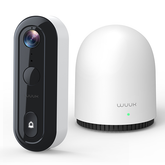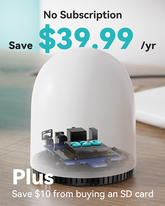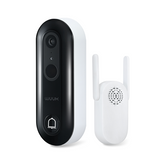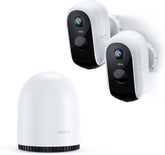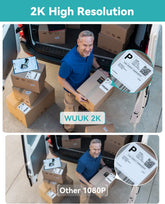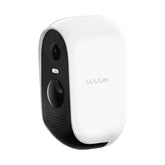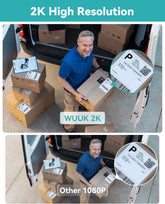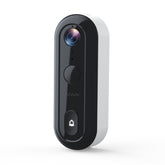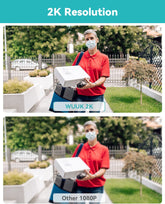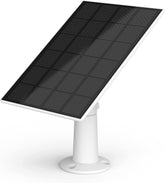Where to Place Your Security Cam for Your Store?
The importance of a robust security system for a small business cannot be overstated. Especially in retail, where the risks of theft, burglary, and vandalism are rife, a surveillance system serves as your eyes and ears even when you're not around. The placement of security cameras in your store plays a crucial role in this. Incorrectly positioned cameras can create blind spots or fail to capture important events. This guide will discuss the role of security systems in small businesses, how many cameras you should install, and where they should be positioned for maximum effectiveness.

The Role of Security Systems in Small Business
Security systems fulfill a multitude of functions within the realm of small businesses. Foremost, they act as a formidable deterrent against theft and vandalism. Criminals are less inclined to target establishments that proudly exhibit visible security measures. Additionally, security cameras serve as invaluable tools for gathering crucial evidence in the unfortunate event of a crime. Such evidence proves indispensable during the subsequent investigations and legal proceedings.
Furthermore, a comprehensive security system possesses the power to enhance operational efficiency. By closely monitoring customer behavior, cameras provide valuable insights into patterns and preferences. This knowledge can inform strategic decisions regarding product placement and store layout. Moreover, security systems aid in managing employees, ensuring their productivity remains optimal.
Hence, it becomes evident that the selection and proper placement of a security system hold immense significance for your business operations and safety protocols.
How Many Security Cameras Should be Installed in Your Store?
A general guideline often cited in the industry is to have at least one security camera for every 1,000 square feet of retail space. So, for a 5,000-square-foot store, you should consider installing a minimum of five security cameras. However, this number is not set in stone; the actual number of cameras you'll need may vary based on several factors.
Don't forget, it's not just about quantity but also quality. Modern surveillance cameras come with features like motion detection, night vision, and high-definition video, which should be factored into your budget and planning. It's advisable to consult with a professional to assess the specific needs of your business.
The 8 Best Places to Install Security Cams for Your Store
1.Entrance and Exit Points
For a security system to be genuinely effective, monitoring who comes in and who goes out is imperative. While it's a given to have cameras at the front entrance, don't overlook the rear and emergency exits. Cameras here should offer high-resolution footage for clear identification. Furthermore, consider using cameras with wide dynamic range capabilities to adjust for lighting conditions automatically, ensuring clear footage even when the outside is bright and the interior is darker.
2.Cash Registers
At the cash register, a variety of transactions and interactions occur, making it a vulnerable spot for potential misdeeds. Overhead cameras can cover a larger field of view and deter not just customers but also employees from attempting theft. Opt for cameras that offer zooming capabilities so you can investigate suspicious activities more closely. In addition, think about integrating these cameras with your Point of Sale (POS) systems. This can help you easily correlate transaction data with video footage, making it easier to spot discrepancies.
3.High-Value Product Sections
Your store's high-value items attract not just customers but also would-be thieves. Place PTZ (Pan-Tilt-Zoom) cameras to cover these sections effectively. Such cameras can move and zoom, offering flexibility in monitoring. Also, supplement these with fixed cameras to ensure there are no blind spots. You might consider using cameras with motion detection capabilities so that any unusual activity during off-hours triggers an alert, keeping these precious items under constant vigilance.
4.Blind Spots
The hard-to-see corners and spots behind tall shelves can often be havens for shoplifters. However, traditional cameras might be too conspicuous and spoil the aesthetics of your store. In such cases, consider using dome cameras that are both discreet and vandal-resistant. These can be mounted on the ceiling and can swivel inside their housing, making it difficult for shoplifters to determine the camera's field of view.
5.Storage Rooms
Storage rooms are treasure troves of inventory that often go overlooked when installing security systems. Use a combination of static and motion-detecting cameras. Static cameras can provide constant coverage while motion-detecting cameras can alert you to unauthorized activity during non-operating hours. Ensure these cameras are connected to your central monitoring system to provide real-time alerts in case of any anomalies.
6.Outdoor Areas
Outdoor areas like parking lots or gardens can often be an overlooked security vulnerability. Surveillance here requires special considerations. Use weather-resistant cameras equipped with IR (Infrared) capabilities for night-time monitoring. If your outdoor area is expansive, consider thermal cameras that can detect human activity based on heat signatures, offering another layer of security.
7.Points of Customer Interaction
Whether it's the customer service desk or specialized consultation booths, these areas are not just about transactions but also about resolving conflicts and handling disputes. A camera here acts as an objective third party, providing invaluable evidence in case of any altercations. Opt for high-resolution cameras that can capture audio as well, but be sure to adhere to state laws regarding audio recording.
8.Additional Security Measures
Beyond camera placement, consider integrating your video surveillance system with other security measures such as alarms, sensors, and access control systems. This creates a multi-layered security solution that covers all your bases, making it nearly impossible for unauthorized activities to go undetected.
Conclusion
The placement of your security cameras can make or break the efficacy of your surveillance system. By understanding the role that these cameras play in the security and efficiency of your small business, you can make more informed decisions. Remember, it's not just about having cameras but having them in the right places. Each camera should serve a specific purpose, and its positioning should be strategic. Your investment in a good security system and its proper placement is an investment in the safety and success of your business. Therefore, make sure to consult with professionals, consider your store layout, and select high-quality cameras to ensure that you're not just watching but also protecting your business effectively.


